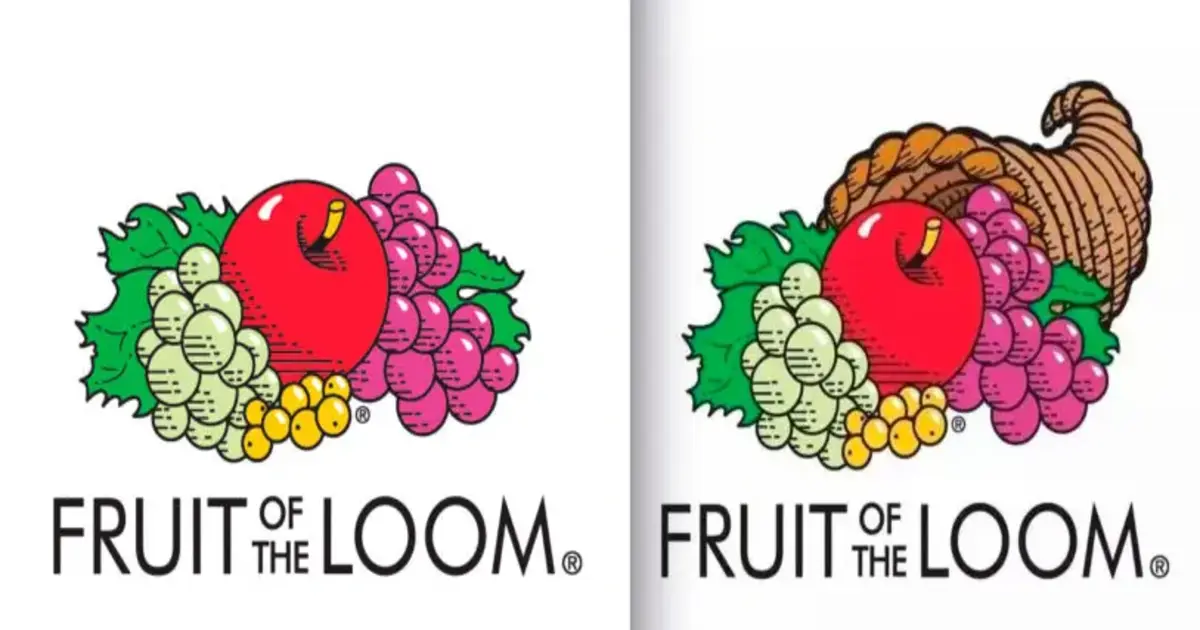Brand logos are more meaningful than symbols; they epitomize essential and recognizable messages. But what occurs if the shared memories of millions inadvertently forget one vital detail about a most famous logo? This is the case with the Fruit of the Loom logo and its mysterious cornucopia. Recently, Snopes researched this strange case to find out that the Fruit of the Loom logo had never featured a cornucopia. This blog post explores this mystery and looks at the Mandela effect and how it affects branding, marketing and collective memory.
Table of Contents
What is the Mandela Effect?
The Mandela effect refers to widespread misremembering by large groups of people. The term was coined by Fiona Broome after many people wrongly believed that Nelson Mandela died in prison during the 1980s, whereas he actually passed away in 2013. This mass false remembrance stretches beyond historical events into popular culture, brand name symbols, and even spellings of certain words.
Examples of Other Well-Known Mandela Effect Cases
- Monopoly Man’s Monocle: Many people remember Monopoly Man having a monocle, but he never did.
- Pikachu’s Tail: Some recall that Pikachu has a black tip at its tail’s end, which is invalid.
- C-3PO’s Silver Leg: Few remember silver-legged C-3PO from Star Wars throughout the original trilogy, but he did.
These examples show that Mandela’s effect can be extensive and diverse, impacting everything from fictional characters to board games.
The Case of the Missing Cornucopia
The mystery surrounding the Fruit of the Loom logo gained momentum when an old t-shirt picture surfaced, suggesting a faded version had a cornucopia. This led to an internet discussion that went back and forth for weeks on end. Curious about these claims, Snopes went out on a quest for truth.
Snopes Investigation and Findings
Snopes’ meticulous examination of the history behind the Fruit of the Loom logo confirmed that it has never had a cornucopia. Despite various claims and supposed photographic evidence, the logo has always depicted a grouping of fruit without the horn of plenty. Snopes identified this as a classic case of the Mandela effect.
The Power of Collective Memory
It’s essential to explore the psychological aspects of collective memory and the Mandela effect to understand why so many people misremember the Fruit of the Loom logo.
Psychological and Cognitive Elements
A 2022 study by the University of Chicago states that certain iconic images elicit consistent, specific, false memories. This study involved logos like Volkswagen, Apple, Pikachu, and C-3PO. Researchers found that participants often confidently recalled incorrect details about these logos.
The Schema Theory
The schema theory could explain this phenomenon. The schema theory posits that people fill in missing information based on their associations. However, the University of Chicago’s study challenged this idea. When asked to choose between the real Fruit of the Loom logo, a version with a cornucopia, and another with a plate, respondents consistently chose the cornucopia despite having no real-life interaction with it in this context. It indicates a more profound, perhaps more complex, cognitive process at work.
Implications and Lessons
The Mandela effect holds significant implications for branding, marketing, and our understanding of collective memory.
Impact on Branding and Marketing
The Mandela effect underscores the importance of consistency in logo design and brand messaging. Misremembered logos can lead to confusion and affect brand identity and recognition. Brands must be vigilant in maintaining their visual and communicative integrity.
Navigating the Challenge of Misremembered Facts
Both companies and individuals can take several steps to mitigate the impact of the Mandela effect:
- Regular Rebranding Audits: Periodically review and update brand assets to ensure they remain faithful to the original design.
- Clear Communication: Clear and consistent communication reinforces brand elements across all platforms.
- Consumer Education: Educate consumers about the correct brand elements to dispel myths and false memories.
Conclusion: Fruit of the Loom Cornucopia Mystery Solved
The Fruit of the Loom Cornucopia mystery is a good case study demonstrating the Mandela effect and the intricacies of collective memory. In contrast to what most people think, it has never had a cornucopia on its unique mark. This psychological phenomenon underscores the cruciality of critical thought and understanding regarding how our brains can fool us.

